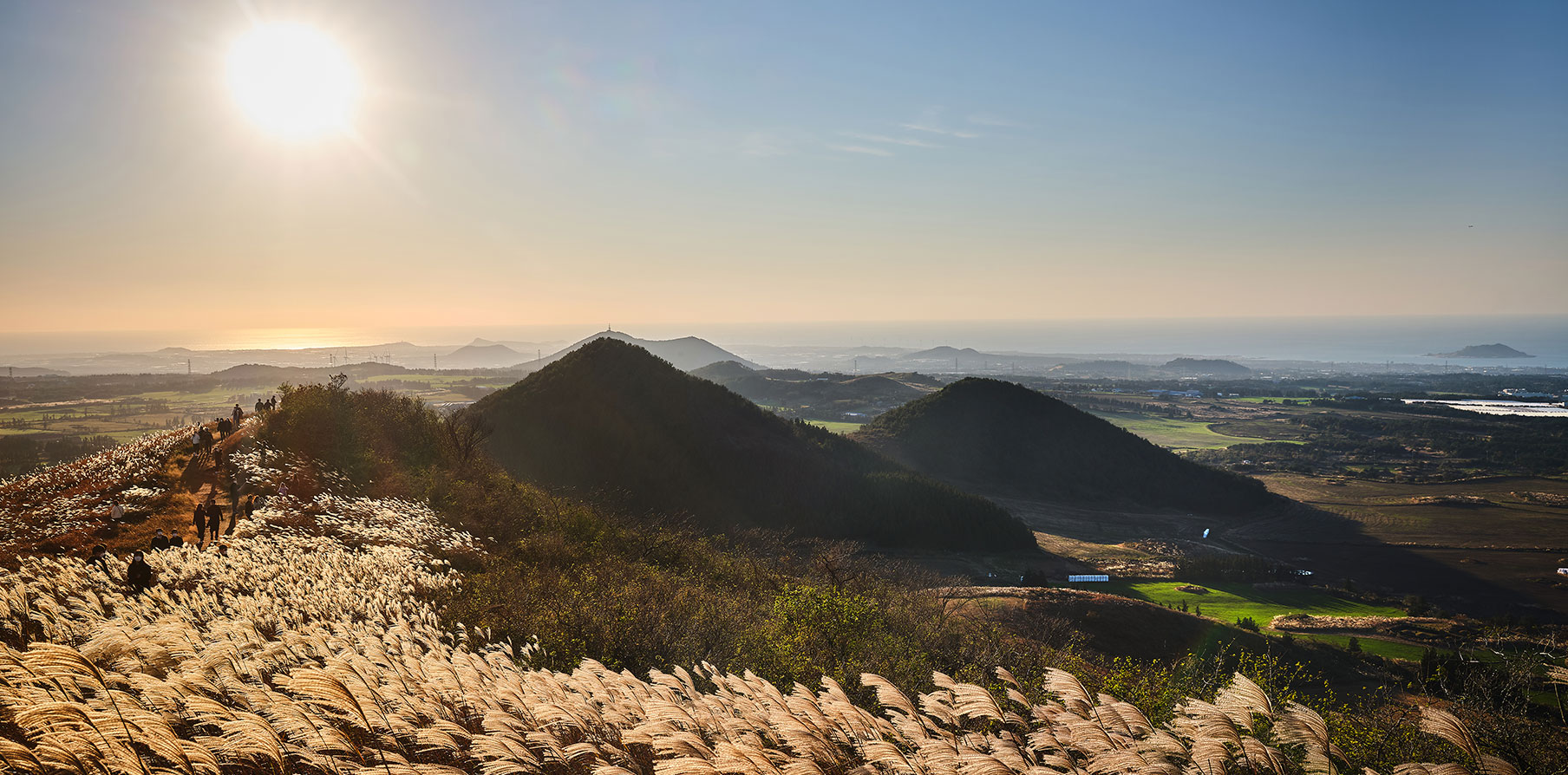Travel
Seeing Off 2020
Aewol-eup Town, Jeju Island
For Koreans, Jeju Island is great for leisure, rest, or even school and business trips.
Many of the nation’s folk songs have lyrics on the island’s natural charms.
Loved both by Korean and foreign visitors, Jeju is both exotic and authentically Korean.
Written by• Lee Jisung
Photographed by• Studio Kenn
Because of its many activities and sights, several days are needed to fully experience the island. One recommended area to spend December is Aewol-eup Town on the island’s western end.
Yongduam Rock
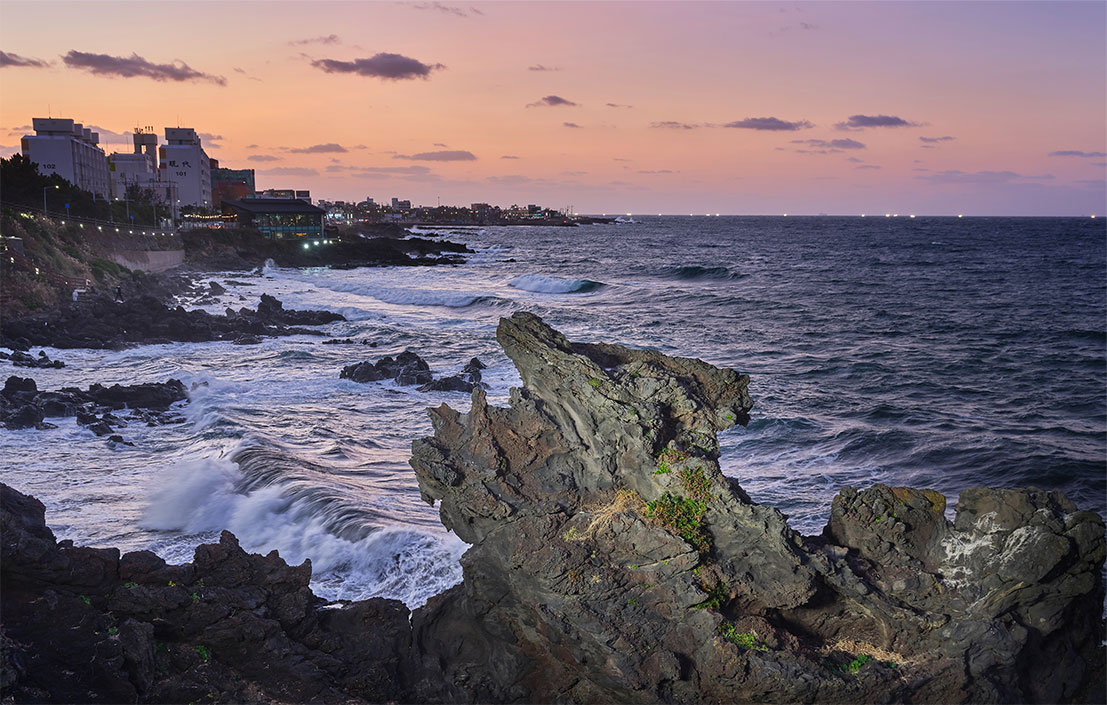
Yongduam Rock forms a beautiful scene at sundown.
Whether one arrives on the island by air or sea, Yongduam Rock is close by. Because of its proximity to either the Jeju airport or seaport, this landmark is frequented by visitors at either the start or end of their trips.
The rock’s name is derived from the Korean word for “dragon,” as it resembles a dragon’s head. A folktale says a serpent long ago lived in the depths of waters around the neighborhood Yongdam-dong and wished to become a dragon for more than a millennium. Despite the elapsed time, the creature needed a jade bead to turn into a proper dragon. Unable to get its hands on jade, it was caught stealing one from a guardian spirit (sanshin-ryeong) on the mountain. The spirit shot the serpent, whose body plunged into the ocean waters and got stuck in the form of a rock, and its head poked out from the water’s surface.
This myth adds a touch of mystique to the still structure of Yongduam, which shows the appearance of a roaring serpent bristling in rage and despair.
Yongyeon Pond
Past the rock’s seaside walkway and 200 m eastward is Yongyeon (Dragon) Pond and Yongyeon Cloud Bridge. Named for its association with the legend of the dragon’s birthplace and playground, the pond forms the intersectional point of freshwater and saltwater. A rugged precipice 8 m tall is connected to the pond by the bridge. The hexagonal gazebo Yongyeon Temple flanks the bridge, where cultural exchanges are said to have flourished. The pond’s waters are accented by fine hues of bluish turquoise, and the classic evergreen tree Sangnoksu further enhances the scenery.
Due to Jeju being an island and the lack of transportation infrastructure back in the Joseon Dynasty era, nobles were often exiled to this region.
A Joseon-era map shows the coastline in Yongdam-dong. One scene on the map features a bluish pond and a dragon-headed boulder, with the pond at its center and the rock on the right-hand side. This document indicates how well-known and familiar both landmarks were to residents in ancient times.
The gradient-infused tint of the pond’s stream and Sangnoksu’s sheer greenery present a stunning sight. To preserve the spirit of Jeju’s ancestors, Yongyeon On-board Musical Concert is held every summer. The bridge, especially when illuminated during radiant nighttime festivities, gives one the feeling of being a Joseon-era seonbi (noble or scholar) indulging in leisurely downtime.
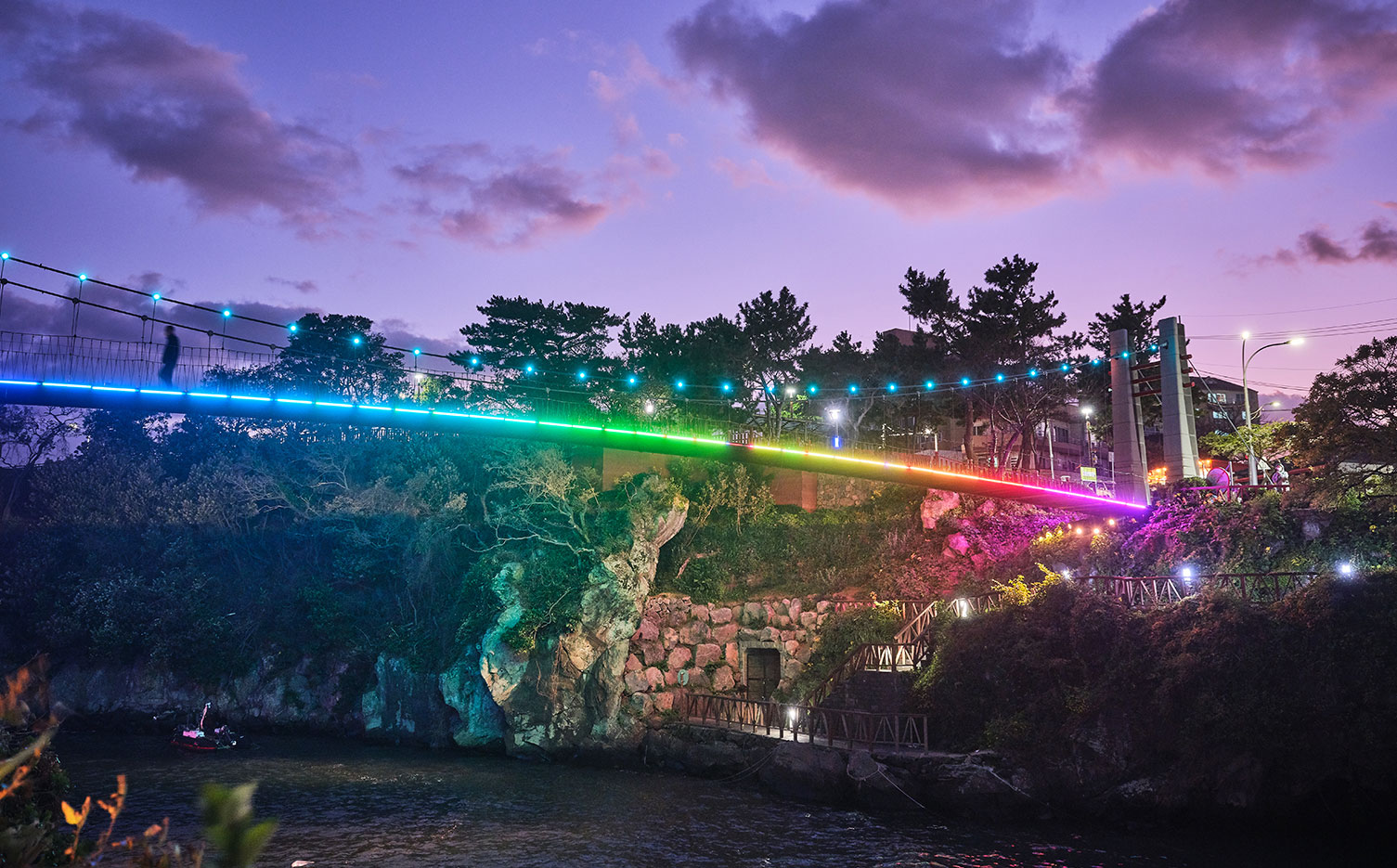
A lit-up Yongyeon Cloud Bridge sports a gorgeous sight at dusk.
Hallim Park
Hallim Park hosts a variety of flower-themed festivals year-round, in addition to housing greenery-infused facilities like Palm Tree Cafe and Dolhareubang Restaurant. Despite widely different menus, the cafe and the restaurant offer famous Jeju delicacies like exotic palm tree and cacti extracts, tropical fruits, handmade chocolates, Jeju pork and mackerel, as well as traditional fare like pheasant broth noodles.
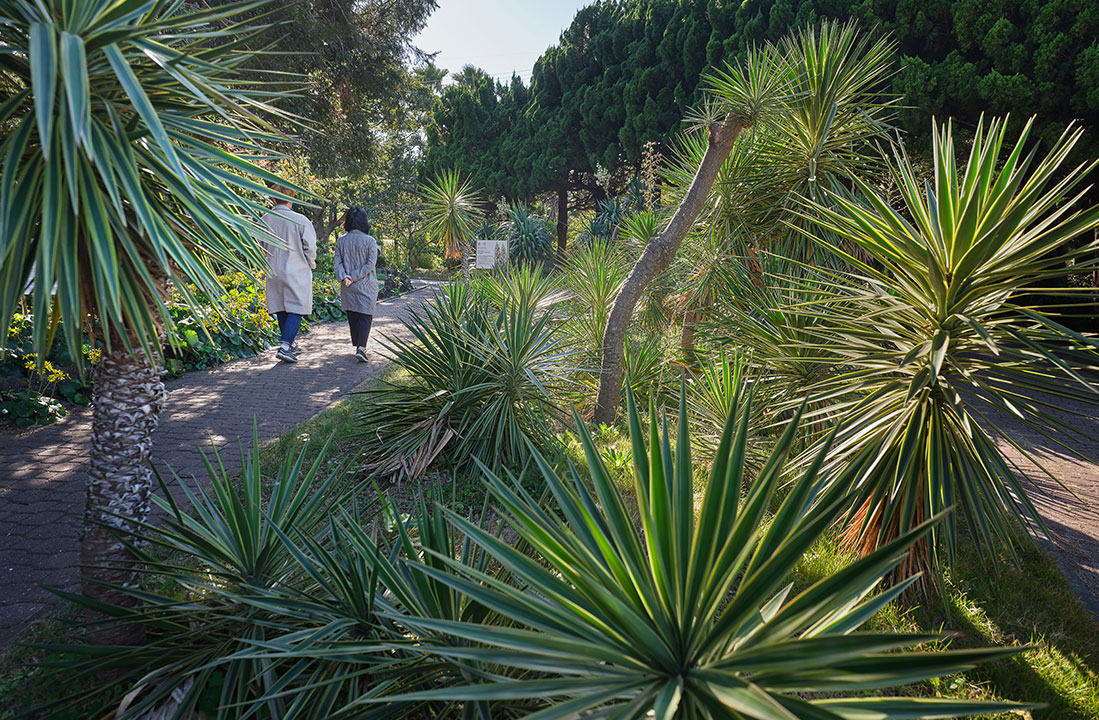
Hallim Park is open to visitors between 8:30 a.m. and 5 p.m. from November through February.
Saebyeol Oreum Volcanic Cone
Oreum is a colloquial Jeju term for a volcanic cone or a gradual slope, two topographical features the island has plenty of. Formed by volcanic activity, these cones played an essential role in Jeju life as a key natural resource. Among Barimae, Nooeun and Geum oreum that densely fill the mountainous topography of western Jeju, Saebyeol Oreum is one of the best of its kind.
Saebyeol’s name is derived from its lonesome stature resembling that of a saetbyeol (morning star). Being near St. Isidore Ranch and its famed lone wangdda (outcast) tree, the oreum draws many visitors thanks in part to its accessibility. It takes around 30 minutes to climb to the top, which offers a view of western Jeju, beautiful beaches and Biyangdo Island. By dusk, the picturesque sunset draws tourists and locals alike.
The famous gala held here around year’s end every year was canceled this year because of COVID-19. The Jeju Fire Festival, which has had 23 editions, signals the passing of the old year and preparation for the new. The fire comes from the agricultural custom of burning old grass to exterminate pests and form new plantations, an activity that occurred in late winter. The three-day event offers delectable snacks and meals throughout the day and impressive fire spectacles at night.
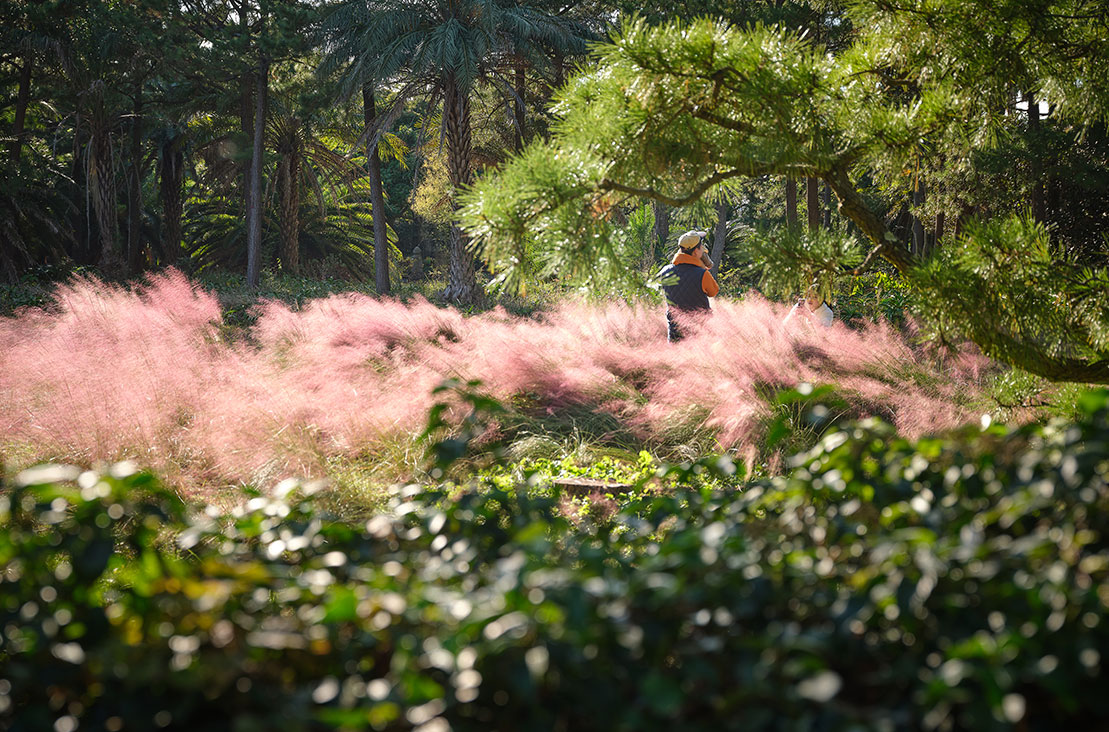
Muhly grass at Hallim Park forms a colorful sight.
“One recommended area to spend the end of the year
is Aewol-eup Town on the island’s western end.”
Handam Beach
This beach sports a walkway spanning the island’s northwestern coastline to Gwakji Gwamul Beach. As part of construction and maintenance conducted by the Jeju provincial government, authorities placed the walkway in a manner to retain the natural geological bends and shapes. This created a wonderful view of the island’s westernmost coastline measuring 1.2 km in length.
Welcoming visitors on the walkway are rocks shaped like a whale, cat, hippopotamus or other animals, with boulders and sculpted rocks adding to the view. In addition, restaurants and cafes add a nice touch to the scenery.
2020 has been difficult for both Korea and the world, so visitors to Handam Beach can spend quiet time collecting their thoughts and reflecting on themselves.

Expect a wonderful view of Jeju Island at Handam Beach.

